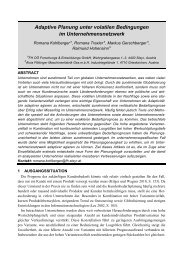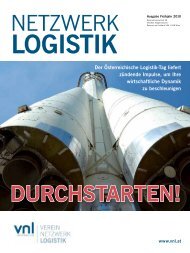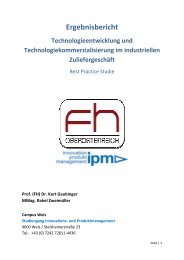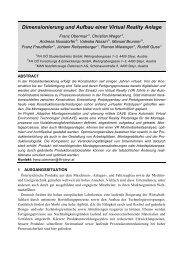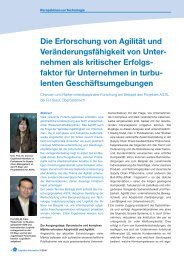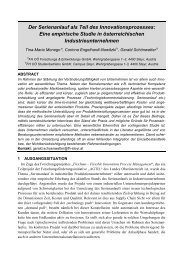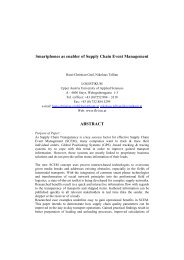a sustainable-oriented technology - agtil
a sustainable-oriented technology - agtil
a sustainable-oriented technology - agtil
Create successful ePaper yourself
Turn your PDF publications into a flip-book with our unique Google optimized e-Paper software.
weakness analysis must be made, the evaluation criteria of which comprise economic, environmental<br />
and social parameters, in order to analyze the firm’s competence base. Finally, the SWOT analysis<br />
allows for the derivation of options for strategic action (Müller-Stewens and Lechner 2005),<br />
which determine concrete search fields for the following phase of idea generation.<br />
In the phase of idea generation many search field compliant <strong>technology</strong> ideas should be generated,<br />
that take into account different internal and external sources of information. A structured suggestion<br />
scheme for ideas can provide both economic and social value. The social value stems primarily<br />
from involving employees in activity areas which are critical to corporate success, and therefore<br />
this participation is able to increase employee motivation and commitment. The integration of<br />
sustainably-minded lead experts (SLE) and sustainably-minded lead customers (SLU) ensures the<br />
appropriate direction of the idea-finding process to <strong>sustainable</strong>-<strong>oriented</strong> needs on the one hand and<br />
gives the opportunity to receive further information and advice for forward-looking solutions on the<br />
other hand. Finally, the alternative ideas for new technologies are evaluated in interdisciplinary<br />
teams by using checklists and value benefit analyses, which consider environmental and social aspects<br />
in addition to economic ones, which in turn allow <strong>technology</strong> to be assessed at an early stage.<br />
To estimate the potential of new technologies and the foundation of the Go/Kill decisions a Delphi<br />
survey can be used, that should involve SLE. In Gate 1, the decision is made to transfer a <strong>technology</strong><br />
idea into a concrete TD project.<br />
6.2 Technology Development<br />
In the phase of project planning (Stage 1) it is necessary to create a general state of knowledge for<br />
all parties involved in the development project, after the composition of the development team<br />
(Slama et al. 2006). A catalogue of clear objectives, which defines both the efficiency of resources<br />
and eco-efficiency as stated goals of the TD project, is an important planning and controlling instrument<br />
during the entire process. Subsequently, an initial project plan is prepared, including a<br />
project structure plan, a schedule plan, a resource and cost plan, and an organizational plan that sets<br />
the roles, responsibilities and the rules. Since TD projects are usually based on a set of imperfect<br />
information at project start, the project planning must be specified with increasing level of information<br />
in the ongoing phases. Similarly, a process-integrated controlling must assess the development<br />
activities and results during the whole development project, including environmental and social<br />
parameters in addition to economic parameters. The resulting stakeholder analysis, generated during<br />
schedule planning, shows the relationship of the project to the relevant stakeholders and identifies<br />
potentials of conflicts and benefit potentials, as a basis for the successful management of relationship<br />
with stakeholders in order to guarantee socio-efficiency (Schwalbe 2007; Nguyen et al. 2009;<br />
Dyllick and Hockerts 2002).<br />
In the subsequent phase - the technical concept (Stage 2) - a technical assessment of the focused<br />
<strong>technology</strong> area is carried out and the possibilities of the TD are investigated in detail by a <strong>technology</strong><br />
assessment (Ludwig 1997). In this context, possible opportunities and risks of the new <strong>technology</strong><br />
will be acquired and evaluated, various solutions will be derived from the assessment and efforts<br />
are being made to assemble existing competences of different specialist departments (Heubach<br />
et al. 2008). The identification and specification of possible applications of the <strong>technology</strong> and the<br />
determination of promising target segments rank among the most important main activities of this<br />
phase.<br />
In the phase of <strong>technology</strong> development (Stage 3) the <strong>technology</strong> concept is realized successively<br />
and iteratively through tests and experiments. Simulation tools can be very useful for a resource-



